 February 7, 2019 John E. Ross, KD8IDJ, Editor
| |||||||
New CEO Aims to Reshape ARRL Objectives, Refocus ARRL HQ Structure A plan by ARRL CEO Howard Michel, WB2ITX, to reshape and reorganize the management structure at ARRL Headquarters will go into effect on Monday, February 11. The ARRL Board of Directors endorsed the plan during its Annual Meeting on January 18 - 19.
"I see ARRL as a membership association, a business, and a 501(c)(3) public charity. As CEO, I intend to strengthen all three aspects. And all three must remain in balance for ARRL to function effectively," Michel said. "As a business, ARRL is not just QST magazine, The Handbook, DXCC, or the VEC program. We can't allow ourselves to continue to think within those traditional parameters," he continued. "ARRL's businesses are not membership, publishing, and advertising. ARRL's businesses are value creation, value delivery, and advocacy. I plan to architect ARRL along those lines." The reorganization has three key components. The first major change is the creation of a management council (MC), a deliberative and generative body to discuss ideas, operations, and long-term planning for ARRL. The group's goal is to foster horizontal lines of communication within the organization. Direct horizontal lines of communications are much more efficient than "up, over, and down," Michel offered. "ARRL's businesses are value creation, value delivery, and advocacy." -- ARRL CEO Howard Michel, WB2ITX The second key change, Michel said, is the addition of a Product Development Manager. This individual's responsibility will be to create new ideas for products and services, create pilot programs to quickly test those ideas, and then -- if the pilot programs are successful -- transition them to operations. Third, he said, is creating the position of a Marketing Communications Manager. "Our brand works with our traditional members. It is not working for newly licensed hams," Michel said. "If we are to create a demand for the value we bring to Amateur Radio, we need a coordinated and consistent message, across all forms of media that resonates with current and potential members." The Board also endorsed the purchase of a modern association management software system that should dramatically improve ARRL members' experiences, Michel said. Read more. ARRL Board Gives the Go-Ahead to Lifelong Learning Initiative ARRL is undertaking a new initiative to provide online educational opportunities to a broad range of radio amateurs. The Lifelong Learning Initiative will seek to provide a series of learning tracks that will serve the needs of the various interest groups within the Amateur Radio community. While designed for everyone with an interest in learning more about Amateur Radio, the Lifelong Learning Initiative will initially focus on creating online learning opportunities for new and newer hams, a segment of the Amateur Radio community desperately searching for educational and instructional and resources.
The ARRL Board of Directors set the Lifelong Learning Initiative in motion, endorsing and funding the program and approving the hiring of advertising agency Mintz + Hoke to work with ARRL Lifelong Learning Manager Kris Bickell, K1BIC, and other ARRL staffers in building this learning environment. Mintz + Hoke will conduct the research necessary to identify the different educational needs within the broader Amateur Radio community. "Mintz + Hoke is a really strong partner in this project," Bickell said, adding that the firm has developed a deep understanding of the Amateur Radio community as part of the research phase of this endeavor. Bickell noted that youth education will be a critical component of this Learning Initiative, but he also believes that overall opportunities in this area are huge, as many individuals are looking to expand their knowledge of Amateur Radio. "We are building a new learning environment." -- ARRL Lifelong Learning Manager Kris Bickell, K1BIC Where appropriate, Bickell said, the content of these learning tracks within the initiative will build upon much of the knowledge base that already exists within ARRL, such as the material in QST and QEX magazines, as well as other ARRL publications and manuals. Some new content will be created as well, to ensure that the information being provided stays fresh and dynamic. In addition to providing instruction, the Learning Initiative will offer resources that allow individuals to delve further into a subject, rather than them relying solely on ARRL content. "We are building a new learning environment," Bickell said. "It will take a lot of work to put this all together, but we believe that this initiative will firmly establish ARRL as an educational leader in Amateur Radio." He expects the online Lifelong Learning platform to launch in the fall of 2019. Read more. Orlando HamCation® this Weekend is ARRL Southeastern Division Convention Orlando HamCation® at the Central Florida Fairgrounds Friday through Sunday, February 8 - 10 is the 2019 ARRL Southeastern Division Convention. One of the largest annual Amateur Radio gatherings in the US, HamCation is hosted by the Orlando Amateur Radio Club. ARRL will have an expanded presence this year, featuring the ARRL Book Store.
Visit the ARRL Booth and Book Store and...
Keep up with the Convention throughout the event via photos on Facebook. The Doctor Will See You Now! "FT8" is the topic of the latest (January 31) episode of the "ARRL The Doctor is In" podcast. Listen...and learn!
Every 2 weeks, your host, QST Editor-in-Chief Steve Ford, WB8IMY, and the Doctor himself, Joel Hallas, W1ZR, will discuss a broad range of technical topics. You can also email your questions to doctor@arrl.org, and the Doctor may answer them in a future podcast. Enjoy "ARRL The Doctor is In" on Apple iTunes, or by using your iPhone or iPad podcast app (just search for "ARRL The Doctor is In"). You can also listen online at Blubrry, or at Stitcher (free registration required, or browse the site as a guest) and through the free Stitcher app for iOS, Kindle, or Android devices. If you've never listened to a podcast before, download our beginner's guide. Just ahead: "Are We Entering a Maunder Minimum?" Brunei V84SAA DXpedition to Focus on Low Bands Setup is under way in the tiny Southeast Asian nation of Brunei, located on the Island of Borneo and surrounded by Malaysia, for the V84SAA DXpedition. Eighteen operators under the leadership of Krassy Petkov, K1LZ, will fire up on February 7 and continue until February 18. Operation will concentrate on the low bands.
All of North America will have some portion of common darkness with V84SAA. Briggs advised North American stations to look for V84SAA immediately after local sunset in Brunei (about 1030 UTC). "We may peak out of a 220° heading about 20 minutes after it gets dark in Brunei," he said. For antennas, the team will use verticals on 160 and 80 meters and a four-square on 40 meters located on the beach. Plans call for two Beverages -- one for Europe and another for North America. While the team will focus on the low bands, expect to find V84SAA on the higher bands too -- including 30, 17, and 12 meters. Brunei is the overall 146th most-wanted DXCC entity, according to the Club Log DXCC Most-Wanted List, but it's number 39 on 160 meters, and 73 on 80 meters. Read more. Young Amateurs Radio Club Wants to Pair Youthful Contesters with "Big Gun" Stations The Young Amateurs Radio Club (YARC) Youth Contesting Program (YCP) wants to match groups of enthusiastic young contesters with "big gun" stations to gain operating experience during the CQ World Wide WPX SSB Contest over the March 30 - 31 weekend. The YCP is a weekend initiative for groups of young Amateur Radio contesters in the US and Canada.
"We will attempt to pair a small group (up to four) of young contesters interested in operating with a 'big gun' station owner interested in hosting the youth group," continued Mann, an ARRL member active in the College Amateur Radio Initiative (CARI). "The contesters will operate from the station, and the host has the option to help the youth improve their skills, provide advice, and even operate alongside. We will try to keep it such that young hams will only require a relatively short drive."
YARC's YCP is inspired by the efforts of Youngsters on the Air (YOTA) and its own Youth Contesting Program, as well as Team Exuberance, Mann said. He added, "We hope to inspire a big chunk of young hams into becoming the greatest contesters of the 21st century." YARC is reaching out to radio amateurs under age 27 or so with at least some contesting experience who would be interested in operating the CQ WW WPX SSB at a contest-grade ham radio station, and to owners of such stations. He urges those interested to sign up (scroll down on their website to select your role of station host or operator). YARC hopes to announce matches on March 1. Email with any questions or comments. Read more. Cuban Radio Amateurs Respond to Severe Tornado From the early morning hours of January 27, radio amateurs in Cuba's capital of Havana were keeping an eye on the weather. An extratropical low-pressure system in the southeastern Gulf of Mexico associated with a cold front approaching from the west was preceded by a line of pre-frontal storms, generating severe weather conditions that deteriorated considerably that evening and into the night. Completely unexpected, though, was an F4 tornado that caused considerable damage in Havana. While hurricanes and tropical storms are fairly regular occurrences, the tornado was said to be the first ever to hit Havana.
"Once again, Amateur Radio operators proved how they could handle emergency traffic during the severe weather event, when the 2G and 3G mobile cellular phone systems collapsed due to damage and the excessive traffic generated by the event," Radio Havana's Arnie Coro, CO2KK, reported on his DXers Unlimited, Weekend Edition program. "Using the Havana Metropolitan Area main repeater on 145.190, stations with handheld FM transceiver[s] could keep in touch from even the most difficult places in the affected areas comprising the municipalities of Regla, San Miguel del Padrón, Habana del Este, and 10 de Octubre." According to media accounts, the storm, with winds approaching 260 MPH, left at least six dead and more than 200 injured; damage to homes and buildings was substantial. The severe weather also left much of Havana in darkness.
More than a dozen radio amateurs responded to assist in the weather emergency, handling message traffic, a Federación de Radioaficionados de Cuba (FRC) report said. "It is worth mentioning the speed with which the emergency information was handled via radio, since everything happened so fast, complicated by a lack of electrical power, landline, and cell communication. [E]verything was in chaos. In seconds, everything stopped working," the report added. While power and telecommunications were promptly restored in many areas, repair or replacement of homes, buildings, and infrastructure lost in the severe storm will take a lot longer. New Campaign Exploiting Linux Servers to Insert Backdoor "SpeakUp" Trojan A new backdoor Linux-based operating system Trojan dubbed "SpeakUp" is on the loose, although so far it does not appear to have propagated to North America or Europe. Research team Check Point Research recently reported the discovery and said SpeakUp exploits known vulnerabilities in six separate Linux distributions and is able to evade all security vendors. Some radio amateurs use various forms of Linux, including the popular Ubuntu software, which includes ham radio apps.
"The attack is gaining momentum and targeting servers in East Asia and Latin America, including AWS [Amazon Web Services]-hosted machines," the Check Point Research article said. "SpeakUp acts to propagate internally within the infected subnet, and beyond to new IP ranges, exploiting remote code execution vulnerabilities. In addition, SpeakUp presented ability to infect Mac devices with the undetected backdoor." Check Point Research said once the software successfully registers a victim, it receives commands to manipulate the machine to download and execute various files, and that SpeakUp serves XMRig cryptocurrency miners listening to infected servers. "SpeakUp's obfuscated payloads and propagation technique is beyond any doubt the work of a bigger threat in the making," Check Point Research concluded. Linux is a family of free, open-source operating systems based on the Linux kernel first released in 1991 by Linus Torvalds. Read more. MarconISSta Offering One Last Chance to Test UHF Antennas The MarconISSta experiment on the Amateur Radio on the International Space Station (ARISS) Columbus module station will be decommissioned on Saturday, February 9, about 3 weeks earlier than anticipated. MarconISSta is a radio spectrum analyzer on the ISS that monitors parts of the RF spectrum in VHF, UHF, L, and S bands in order to analyze current use and availability for satellite communication.
Whenever the ISS is within range, transmit between 435 and 438 MHz, avoiding 435.95 MHz in Europe and 436.5 MHz (the receiver's center frequency). Transmit a continuous carrier and do not employ Doppler shift correction. Read more. Earth's Magnetic North Pole Shifts toward Siberia National Centers for Environmental Information (NCEI) scientists have updated the world magnetic model (WMM) mid-cycle, as Earth's northern magnetic pole has begun shifting quickly away from the Canadian Arctic and toward Siberia, an NCEI report said this week. While the new WMM more accurately represents the change of the magnetic field since 2015, it has no impact on propagation. Updated versions of the WMM are typically released every 5 years. This update comes about 1 year early.
"This out-of-cycle update before next year's official release of WMM 2020 will ensure safe navigation for military applications, commercial airlines, search and rescue operations, and others operating around the North Pole," said NCEI, which is part of the National Oceanographic and Atmospheric Administration (NOAA). "Organizations such as NASA, the Federal Aviation Administration, US Forest Service, and many more use this technology. The military uses the WMM for undersea and aircraft navigation, parachute deployment, and more." Other governmental entities use the technology for surveying and mapping, satellite/antenna tracking, and air traffic management. Smartphone and consumer electronics companies also rely on the WMM to provide consumers with accurate compass apps, maps, and GPS services. Airport runways may be the most visible example of a navigation aid updated to match shifts in Earth's magnetic field. Airports around the country use the data to give runways numerical names, which pilots refer to on the ground. The declination has changed slightly more than 2.5° over the past 2 decades or so. Compasses use declination -- the difference between true north and where a compass points -- to help correct navigation systems for a wide variety of uses. Read more. -- Thanks to NOAA-NCEI In Brief....
The K7RA Solar Update Tad Cook, K7RA, Seattle, reports: Solar wind pushed geomagnetic indicators higher on February 1 - 2. The average planetary A index rose from 7 (for the 7 days ending January 30) to 11.6 on January 31 - February 6. When geomagnetic conditions are active, we usually see higher indices at high latitudes. Alaska's college A index (measured near Fairbanks) was 40 on February 1, indicating disturbed conditions for the higher latitudes, with a great deal of absorption rather than reflection of HF radio waves.
Predicted solar flux for the next 45 days is 70 on February 7 - 14; 72 on February 15 - 25; 71 on February 26 - March 11, and 72 on March 12 - 23. Note: No predicted flux values below 70. Predicted planetary A index is 10, 15, 12, and 8 on February 7 - 10; 5 on February 11 - 18; 12, 20, 12, and 8 on February 19 - 22; 5 on February 23 - 26; 12 on February 27; 15 on February 28 - March 1; 10, 8, 12, and 8 on March 2 - 5; 5 on March 6 - 17; 12, 20, 12, and 8 on March 18 - 21, and 5 on March 22 - 23. If you use software such as W6ELProp, use the predicted smoothed sunspot number, updated on the first Monday of each month (look toward the end of the report). Sunspot numbers for January 31 - February 6 were 0, 0, 0, 0, 0, 0, and 0, with a mean of 0. The 10.7-centimeter flux was 72.1, 72.1, 70.9, 71.1, 70.7, 70.6, and 70, with a mean of 71.1. Estimated planetary A indices were 14, 17, 17, 11, 7, 5, and 10, with a mean of 11.6. Estimated mid-latitude A indices were 12, 10, 11, 8, 5, 3, and 7, with a mean of 8. A comprehensive K7RA Solar Update is posted Fridays on the ARRL website. For more information concerning radio propagation, visit the ARRL Technical Information Service, read "What the Numbers Mean...," and check out K9LA's Propagation Page. A propagation bulletin archive is available. Monthly charts offer propagation projections between the US and a dozen DX locations. Share your reports and observations. Just Ahead in Radiosport
See the ARRL Contest Calendar for more information. For in-depth reporting on Amateur Radio contesting, subscribe to The ARRL Contest Update via your ARRL member profile email preferences. Upcoming ARRL Section, State, and Division Conventions
Find conventions and hamfests in your area.
. .
Subscribe to...
Free of charge to ARRL members...
| |||||||
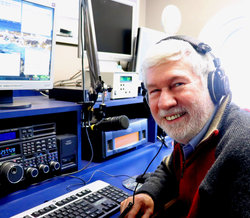
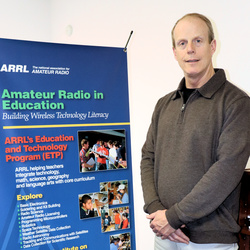
 HamCation is an opportunity to meet members of the all-volunteer ARRL Board and Field Organization. College radio clubs are invited to hang their school pennants in the ARRL exhibit area. The first 30 college undergraduates to visit the ARRL booth get a free reusable water bottle. And don't miss the Collegiate Amateur Radio Initiative (
HamCation is an opportunity to meet members of the all-volunteer ARRL Board and Field Organization. College radio clubs are invited to hang their school pennants in the ARRL exhibit area. The first 30 college undergraduates to visit the ARRL booth get a free reusable water bottle. And don't miss the Collegiate Amateur Radio Initiative (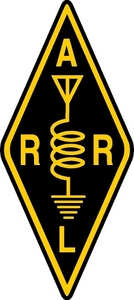 Shop for new books, including 2019 editions of The ARRL Repeater Directory® and The ARRL Handbook; Magic Band Antennas by Bruce Walker, N3JO; Portable Operating by Stuart Thomas, KB1HQS, and more!
Shop for new books, including 2019 editions of The ARRL Repeater Directory® and The ARRL Handbook; Magic Band Antennas by Bruce Walker, N3JO; Portable Operating by Stuart Thomas, KB1HQS, and more! Sponsored by
Sponsored by  "Many of the team have already landed in Brunei, and the tent is set up on the beach for the CW team," top band expert Jeff Briggs, K1ZM/VY2ZM, reported just prior to his planned departure from the US. Briggs explained in a February 4 update that two operating sites -- one for CW and the other for SSB -- are some 25 kilometers apart. "The CW stations will be set up on Seri Kenangan Beach, with an ocean shot to North America and Europe," he said, adding that he anticipates the first real night will be February 8, as the team may not be fully set up right away on 160 meters. After that, Briggs said he plans to be at the radio nightly, and he's hoping man-made noise remains minimal to nonexistent.
"Many of the team have already landed in Brunei, and the tent is set up on the beach for the CW team," top band expert Jeff Briggs, K1ZM/VY2ZM, reported just prior to his planned departure from the US. Briggs explained in a February 4 update that two operating sites -- one for CW and the other for SSB -- are some 25 kilometers apart. "The CW stations will be set up on Seri Kenangan Beach, with an ocean shot to North America and Europe," he said, adding that he anticipates the first real night will be February 8, as the team may not be fully set up right away on 160 meters. After that, Briggs said he plans to be at the radio nightly, and he's hoping man-made noise remains minimal to nonexistent.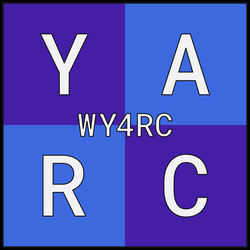 "It will hopefully enable a new dimension of the hobby [for] young hams who have contested a little before, and set a new precedent for the welcoming of a new generation of radiosport aficionados," explained YARC Board Member Sterling Mann, N0SSC. The 27-year-old electrical engineer, who helps manage YARC programs and outreach, described the initiative as "intentionally flexible, lightly organized, and low-cost."
"It will hopefully enable a new dimension of the hobby [for] young hams who have contested a little before, and set a new precedent for the welcoming of a new generation of radiosport aficionados," explained YARC Board Member Sterling Mann, N0SSC. The 27-year-old electrical engineer, who helps manage YARC programs and outreach, described the initiative as "intentionally flexible, lightly organized, and low-cost."
.jpg)
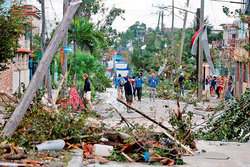 A Havana repeater on 145.33 MHz was pressed into service for the first time for this sort of event. A 144.410 MHz repeater in the affected area of 10 de Octubre proved very useful in handling traffic with medical workers, firefighters, and government emergency managers, Coro said in his broadcast.
A Havana repeater on 145.33 MHz was pressed into service for the first time for this sort of event. A 144.410 MHz repeater in the affected area of 10 de Octubre proved very useful in handling traffic with medical workers, firefighters, and government emergency managers, Coro said in his broadcast.
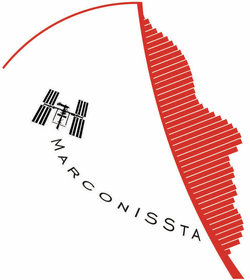 The project is conducted by a team of researchers and students from Technische Universität Berlin, with support of the German Aerospace Center, the European Space Agency, ARISS, and other partners. MarconISSta engineers are inviting anyone with a UHF antenna who can generate at least 30 dBW EIRP to
The project is conducted by a team of researchers and students from Technische Universität Berlin, with support of the German Aerospace Center, the European Space Agency, ARISS, and other partners. MarconISSta engineers are inviting anyone with a UHF antenna who can generate at least 30 dBW EIRP to .jpg)
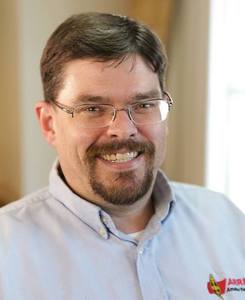 ARRL's Emergency Preparedness Manager is stepping down. Mike Corey, KI1U, has announced that he will depart ARRL on February 15 to pursue another career opportunity. He has been part of the ARRL staff since 2010. "Mike has accomplished much during his 9 years on the job, including expanding the
ARRL's Emergency Preparedness Manager is stepping down. Mike Corey, KI1U, has announced that he will depart ARRL on February 15 to pursue another career opportunity. He has been part of the ARRL staff since 2010. "Mike has accomplished much during his 9 years on the job, including expanding the  The 2019
The 2019 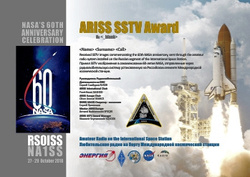 ARISS
ARISS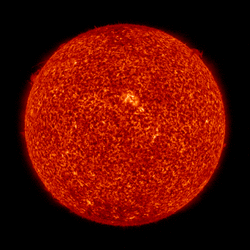 No sunspots were recorded over this period, so average daily sunspot numbers plunged from 19.6 to 0. The average daily solar flux declined from 74.5 to 71.1.
No sunspots were recorded over this period, so average daily sunspot numbers plunged from 19.6 to 0. The average daily solar flux declined from 74.5 to 71.1.







